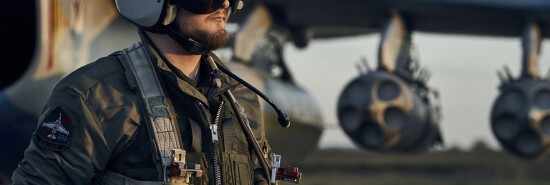
Ukraine’s counteroffensive choice between the bold and the very bold
Tom Rogan
Video Embed
The motto of the British Army’s 22nd Special Air Service Regiment, a unit playing a key role in Ukraine’s war effort, is “Who Dares Wins.”
Ukraine is preparing to test the extent of that thesis.
FOR VICTORY DAY, RUSSIA PLAYS UP ITS PRETEND CONNECTION BETWEEN TODAY’S UKRAINIANS AND NAZIS
These aren’t easy times for Russian forces in Ukraine. Those forces lack sufficient numbers of capable personnel, equipment, and ammunition. Troop morale is low. The grinding of tens of thousands of Russian personnel and vast amounts of munitions in and around Bakhmut has fostered increasingly vitriolic if theatrical tensions between Yevgeny Prigozhin’s Wagner Group and Russian conventional forces.
Making matters worse, a Ukrainian counteroffensive looms. The stress of attempting to anticipate where, when, and how Ukraine’s action will begin must be physically and psychologically exhausting. But from Ukraine’s perspective, the operative counteroffensive question is not whether to go bold but rather how bold. They have the advantage over Russian forces in equipment, morale, command and control, munitions, and Western-enabled real-time intelligence (of great value in exploiting evolving battlefield conditions).
The boldest option would be for Ukraine to conduct a pincer movement. A hypothetical possibility here would be a multi-pronged attack, for example, from the area of Horlivka, 15 miles north of Donetsk, and Vuhledar, 20 miles southwest of Donetsk.
While this area is heavily concentrated with Russian forces, any Ukrainian breakthrough would be a severe blow to Russian morale. It might also enable the dissection of Russian forces in Ukraine. That outcome would worsen already critical supply shortages while essentially eliminating Russian prospects for future large-scale offensives. It’s less than 50 miles from Vuhledar to the city of Mariupol, located on the Sea of Azov, so a breakthrough offers potential for strategic victories. The key question here would be whether Ukraine could achieve rapid breakthroughs in multiple areas and whether Russian forces were able to organize an effective retreat to new defensive lines (something they have struggled to do in the past).
The less bold but still significant Ukrainian option would be a push to dissect the Crimean Peninsula from Russian forces on the Ukrainian mainland. As I’ve noted, this action would carry deep symbolic value, impose a painful political loss on Putin, and greatly complicate Russian efforts to resupply Crimea.
It’s clear the Russians are worried. Last week’s drone incident at the Kremlin may have been a false flag attack designed to consolidate Russian popular support for the war in advance of anticipated battlefield losses. But bluster remains another favored Russian tactic in the face of Ukraine’s threat. Consider what one Russian civilian overseer south of Zaporizhzhia (bordering the Ukraine-bisecting Dnieper River) told the TASS state news agency on Monday. He observed that Russia’s “58th and 35th armies are ready to hold back the onslaught of the enemy and, moreover, go on the counteroffensive, I’m talking about our offensive today, because we have enough forces and means.”
The ability of Russian forces to withstand Ukraine’s counteroffensive is as yet unclear. Still, the notion that Russian forces hold immediate offensive potential up the Dnieper River toward Zaporizhzhia is utterly absurd. That Russian officials and propagandists suggest as much shows that they’re resorting to fiction to keep themselves calm.
Ukrainian commanders, however, will see the battlefield as one that offers tantalizing options.
